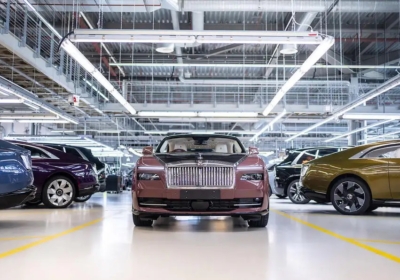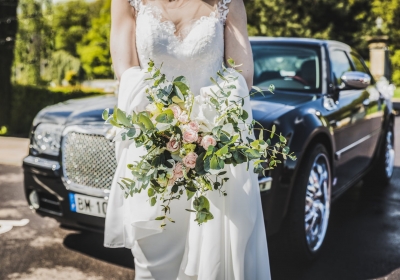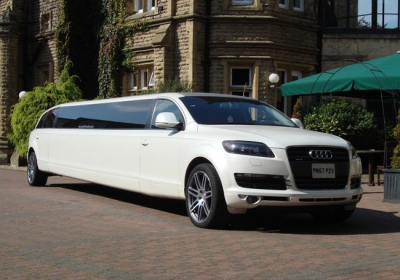It is important to state at the outset that the Schedule 6 (Construction of Minibuses) conversion is not a limousine ‘approval scheme’. It is conversion completed in order that a vehicle can pass the DVLA Private Minibus test. Thereafter, the vehicle can be used to carry up to 8 passengers for hire and reward under a Restricted PSV Operators Licence. As a private vehicle it is also permissible to carry as many passengers as it has been approved for, but the vehicle cannot be used for the carriage of more than 8 passengers for ‘hire and reward, unless the vehicle has a Certificate of Initial Fitness (CoIF), the driver has an appropriate licence and the operator has a Standard or Restricted Bus Operators Licence.
It is theoretically possible to use the vehicle as a Private Hire Vehicle to carry up to 8 passengers for ‘hire and reward’ however, if this is your intention, then you should approach your Local Authority first. This is principally because the vehicle have been registered as a Private Minibus and therefore does not fall within the SVA scheme, something that most Local Authorities insist upon before they will licence any vehicle for private hire. There may also be issues surrounding the number of seats and the DVLA description of the vehicle. In summary, a vehicle that has passed the Private Minibus test is unlikely to be accepted as a Private Hire Vehicle, that notwithstanding some Local Authorities may look upon an application sympathetically.
More recently schedule 6 (and 7) conversions have been used to licence the limousine to carry, for example, up to 14 passengers as a private minibus. In turn, limousine operators have then offered the vehicle on a ‘self-drive hire’ basis to anyone wishing to carry more than 8 passengers (typically up tp 14), provided they use an “approved” driver, who must be drawn from a group recommended by, but not directly associated with or by the limousine operator. As a consequence of this policy, the vehicle does not need to have a Certificate of Initial Fitness, nor does the limousine operator need a Standard or Restricted Bus Operator Licence.
This method of hire is very contentious, supporters have argued that it is a perfectly legal way of operating and it would appear that this has been ratified by a Barrister with long experience of the transport sector. Others have argued that the limousine operator is hiring the vehicle in the full knowledge that the vehicle will be used for ‘hire and reward’ particularly where the costs are shared amongst the passengers and, that in effect, the limousine operator is complicit by failing to make clear to the hirer that should they accept part payment or profit from the hire of the vehicle, that they themselves could be charged with operating a vehicle for hire and reward without the proper licence.
At this time, no-one can truly argue that it is a legal practice, an expert such as a Barrister can provide an opinion, but that is all it is. Until this practice actually tested in court, it should not be described as a legal method of carrying over 8 passengers for hire and reward without the need for a Bus Operators Licence or a Certificate of Initial Fitness for the vehicle.
There is also a question over the insurance of the vehicle, all self-drive hire insurance policies state very clearly that the vehicle cannot be used for hire and reward. If the limousine operator’s policy retains this wording they could be exposed to have an unrecoverable loss in the event of an accident, where it was deemed that the vehicle was indeed being used for hire and reward. If the insurance company varies this term to allow the vehicle to be used for hire and reward, then it could be argued that they are either complicit in the whole arrangement, or that they recognise that the vehicle may be used for hire and reward. Whilst this practice may not lead to a successful prosecution of an insurer, it would be argued by the protagonists that the insurers morally wrong.
It is likely, though not inevitable, that the current legislation will be amended to prevent vehicles being registered via a schedule 6 or 7 conversion, in order that vehicle need not be subjected to the tougher requirements of an SVA or CoIF. In addition, it is not beyond the bounds of reason, that the current legislation will be amended to prevent companies from using the existing rules for something that was never intended when they were drawn up.
In summary, whilst a schedule 6 conversion may be an excellent shortcut to vehicle registration, it is most likely to be short-lived, in the same way that the interpretation of the SVA rules were varied to make it much more difficult to attain.
Cars for Stars is a licensed operator of chauffeur cars and limousines in the UK and also operates a franchised limousine hire business.
Disclaimer:
Any information contained herein is provided in good faith and based on research and public documents available at the time. However, it is entirely the responsibility of the reader (or any other party) to establish the veracity of any of the claims or information contained herein through their own independent sources, including, but not limited to, their own accountants, legal advisors and contacts with the relevant licensing, industry or government bodies. Cars for Stars Limited accept no responsibility or liability for any errors, omissions or exceptions.




